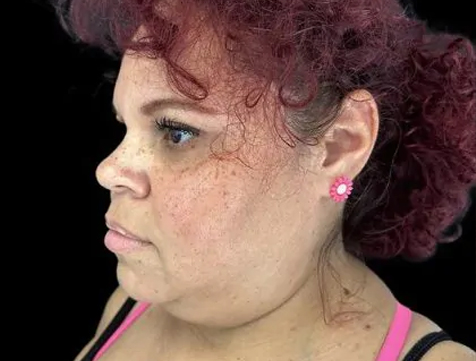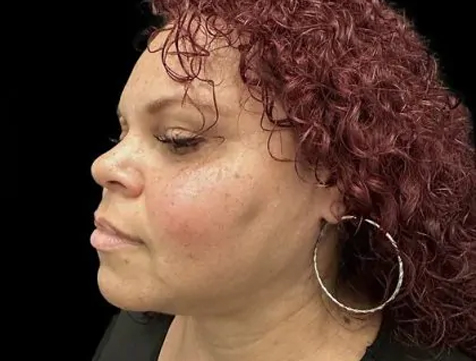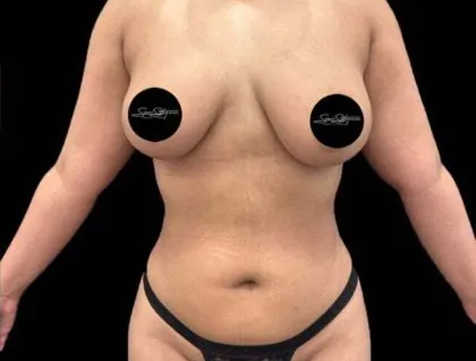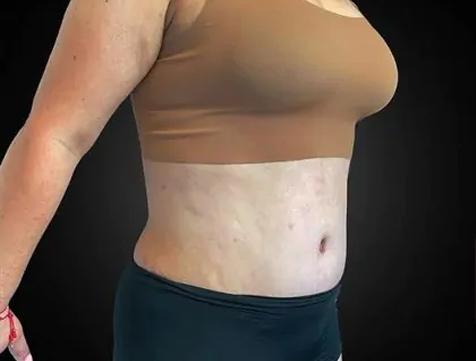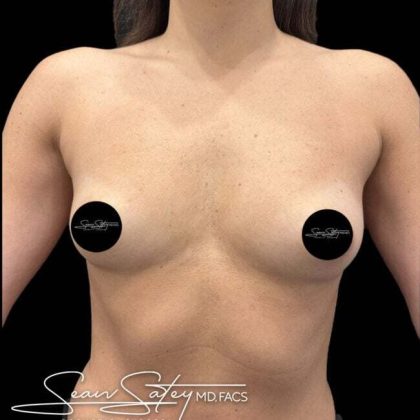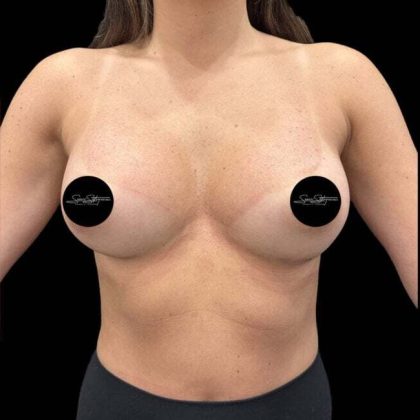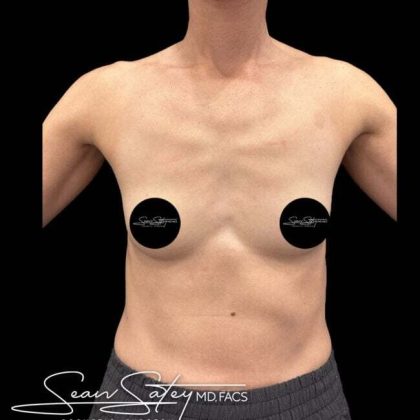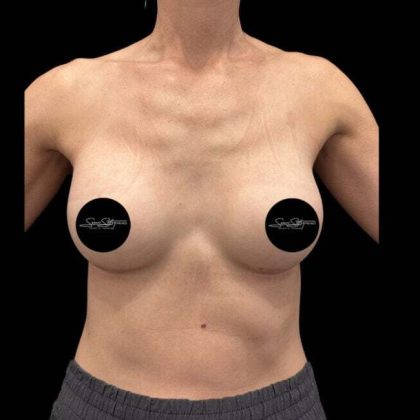Breast Augmentation
Consultations offered at our two convenient locations in Lancaster and Los Angeles, CA

Breast augmentation is a surgical procedure designed to enhance the size, shape, and symmetry of a person’s breasts, resulting in a fuller and more proportionate appearance. (1)
Individuals may choose this procedure to address volume loss due to aging, pregnancy, weight fluctuations, or simply to achieve their desired breast aesthetics! If you’re considering enhancing your breast profile, you might be an ideal candidate for a breast augmentation.
Dr. Sean Satey is a fellowship-trained cosmetic surgeon with over a decade of experience, renowned for delivering natural-looking results that exceed patient expectations. Serving patients in Los Angeles and Lancaster, Dr. Satey and his dedicated team are committed to providing personalized care and exceptional outcomes.
If you are interested in learning more about breast augmentation procedures, schedule a personal consultation with Dr. Satey and his team online or by calling (424) 599-2332.
Contents
Before & After Photos
Before and After Photos
About Breast Augmentation
Breast augmentation has become one of the most popular cosmetic procedures, offering individuals the opportunity to enhance their breast size and shape to better align with their aesthetic goals. Among all breast enhancement procedures in the United States, breast augmentation is the most commonly performed. (2) This procedure typically involves the placement of implants to increase breast volume and improve symmetry. As an alternative, patients can also opt for a method known as fat grafting to achieve a subtler enhancement with their own natural tissue – their fat!
Fat Grafting Approach
Some patients seeking breast augmentation will opt for a technique known as fat grafting (or an autologous fat transfer) to the breasts. In conjunction with a VASER-assisted liposuction procedure, this approach takes fat from another area of a patient’s body, such as the abdomen, flanks, or thighs, where it is then purified and reinjected into the breasts to create a fuller, more aesthetically desired contour. (3) With the fat grafting approach, patients can achieve a maximum increase of one cup size. The cons of the procedure include fluctuations in the size of the breasts with weight gain and loss. The pros include utilizing your own tissues for augmentation without the need for a foreign body.
Implant Options: Saline vs. Silicone
Patients who want to achieve a more significant breast size increase may choose an implant-based approach. Implants come in predictable sizes, with multiple profiles to choose from. When considering breast implants, patients have two primary options: saline and silicone.
- Saline Implants: Filled with sterile saltwater, saline implants are typically inserted empty and then filled once in place. They provide a level of customizability, as well as a uniform shape and firmness.
- Silicone Implants: Filled with silicone gel, these implants tend to feel more like natural breast tissue. Dr. Satey prefers silicone implants due to their natural feel and appearance.
Implant Placement: Under the Muscle vs. Over the Muscle
The placement of breast implants can significantly impact the final result. Implants can be placed either under or over the pectoral (chest) muscles:
- Under the Muscle (Submuscular): Implants are placed beneath the pectoral muscle. This method often results in a more natural appearance and may reduce the risk of certain complications, such as capsular contracture (when scar tissue forms and tightens around the implants). Dr. Satey prefers the submuscular placement for its aesthetic advantages.
- Over the Muscle (Subglandular): Implants are placed above the pectoral muscle, just beneath the breast tissue. This approach may involve a shorter recovery period but can be less natural-looking in some cases. With this method, there is a higher risk of capsular contracture. However, this approach is preferred for individuals with strong chest muscle tone (swimmers, tennis players, etc).
Implant Brands: Mentor vs. Natrelle vs. Motiva
Selecting the right implant brand is crucial for achieving a patient’s desired outcomes. A few popular brands include Mentor, Natrella, and Motiva:
- Natrelle: As Dr. Satey’s preferred choice, Natrelle implants are known for their variety and quality, offering options that cater to diverse patient needs.
- Mentor: A reputable brand offering a range of implant options with a long-standing history in breast augmentation.
- Motiva: Known for innovative designs and advanced technology, providing a natural feel and appearance. These implants are the newest available on the market.
Dr. Satey will guide you in selecting the implant that best aligns with your body type and aesthetic goals.
Benefits
Breast augmentation offers numerous benefits to women who seek this treatment. Some of these benefits often include:
- Increased Self-Esteem: Many patients experience a boost in confidence post-surgery.
- Asymmetry Correction: For women with uneven breast sizes, this procedure can achieve a more symmetrical look.
- Restored Volume: After weight loss or pregnancy, many women find their breast volume diminishes. Augmentation can restore this lost fullness.
- Long-lasting Results: With proper care and regular monitoring, breast implants can last many years with exceptional results.
- Customizable Options: Patients can choose the size, shape, and type of implants that best suit their aesthetic preferences.
Breast augmentation procedures provide numerous advantages, making this a popular procedure among Dr. Satey’s patients. To learn more about the benefits of breast augmentation, schedule a personal consultation with Dr. Satey and his team online or by calling (424) 599-2332.
Ideal Candidates
Suitable candidates for breast augmentation typically include women who:
- Are physically healthy and have no pre-existing medical conditions that could interfere with the surgery.
- Have realistic expectations about the procedure’s outcomes.
- Are dissatisfied with the current size or shape of their breasts.
- Want to enhance symmetry between breasts or restore volume after weight loss or pregnancy.
Ultimately, your candidacy for surgery will be determined during your personal consultation.
Personal Consultation
The first step in undergoing breast augmentation is scheduling a personal consultation at Dr. Satey’s office. During this meeting, Dr. Satey will review your medical history, take note of your aesthetic goals, and examine your breast anatomy. This initial assessment helps Dr. Satey identify the ideal treatment methods for you, whether they include fat grafting or breast implants.
Dr. Satey will also inform you whether you will benefit from a breast lift. If you are receiving implants, Dr. Satey will help guide you in selecting a minimum, maximum, and ideal implant size. During the surgery, he will use an “implant sizer” to fill up the chest cavity and determine which implant size fits you the best, based on your preferred size selections.
The consultation is also a great opportunity for you to ask any questions and discuss potential risks and concerns about the surgery. Ultimately, this consultation is meant to be informative for both you and Dr. Satey, as it will give Dr. Satey the necessary information to craft a personalized treatment plan to help you reach your desired aesthetic outcomes.
To get started on your journey toward your ideal breast aesthetic, schedule a personal consultation with Dr. Satey and his team by contacting one of our two offices in Lancaster or Los Angeles online or by calling (424) 599-2332.
Preparation
Once you’ve decided to proceed with a breast augmentation, Dr. Satey and his team will provide you with detailed preoperative instructions, which may include:
- Discontinuing certain medications or supplements.
- Ceasing tobacco and nicotine use to promote optimal healing.
- Arranging transportation for the day of surgery.
- Planning for adequate recovery time.
Dr. Satey and his staff will be available to guide you through the preparation process, as proper preparation is an important element of a successful breast augmentation procedure.
Procedure
The specifics of your breast augmentation procedure will depend on whether a fat transfer or implants will be used. All procedural details will be explained in detail to you during your personal consultation and pre-operative visits.
During your breast augmentation with implant procedure, Dr. Satey will strategically make incisions in areas that will minimize visible scarring, usually either along the natural crease beneath the breast (known as the inframammary fold approach) or around the areola (peri-areolar approach). After the implant-sizer process, he will insert the chosen implant underneath (or in some cases, above) the pectoral muscle using a Keller Funnel to help minimize the size of your incision. Dr. Satey prides himself on making the smallest incisions for any given implant size.
For fat grafting breast augmentation, Dr. Satey will first perform VASER-assisted liposuction on an area that has sufficient excess fat, such as the abdomen, flanks, back, or thighs. After the fat has been harvested, processed, and purified, it is reinjected into the breasts to create a fuller look. As mentioned previously, this method allows for a maximum of one cup size increase.
Recovery
After the procedure, Dr. Satey’s team will give you specific post-operative instructions to facilitate a smooth healing process. Initially, you may experience some swelling, bruising, and discomfort, all of which are common and expected after breast augmentation. Typically, most patients can resume some light daily activities within the first week, though strenuous activities and heavy lifting should be avoided for several weeks as you continue to heal. We will help you schedule follow-up appointments with Dr. Satey so he can monitor your progress and ensure that your recovery is progressing as anticipated. Dr. Satey and his dedicated staff will remain available to answer any questions or address concerns throughout the recovery process.
Results
Over the weeks and months following your procedure, as swelling diminishes and the implants or transferred fat settle into place, you will see a refined, natural-looking enhancement that complements your body’s proportions. Dr. Satey’s meticulous expertise ensures that the final results are both aesthetically pleasing and long-lasting. Most patients enjoy a boost in self-confidence and an improved overall silhouette, feeling more confident in certain outfits and everyday life.
Corresponding Procedures
Many patients choose to combine breast lift procedures with their breast augmentation to achieve more complete, comprehensive results if they have droopiness or “ptosis” of the breasts. Dr. Satey can help you explore which, if any, additional procedures are right for you to help you achieve your goals. In many cases, patients opt to undergo VASER-assisted liposuction in addition to their breast augmentation, or perhaps include breast augmentation as a part of an overall comprehensive procedure, such as a mommy makeover.
Cost of Breast Augmentation in Los Angeles and Lancaster
The cost of your breast augmentation procedure will depend on numerous factors such as the method used and whether or not you opt to have additional procedures performed in conjunction with your procedure. Dr. Satey and his staff offer financing options to those who qualify, and he and his team will be happy to provide you with a detailed cost estimate during your personal consultation.
FAQ
What are breast implants made of?
Breast implants can be filled with silicone gel or saline solution. Each type has its advantages and is selected based on the patient’s preference and Dr. Satey’s recommendations.
Is breast augmentation safe?
While breast augmentation is considered safe, as with any surgery, risks exist. During your consultation, Dr. Satey will discuss potential complications and help you understand how to minimize them.
How long do breast implants last?
With proper monitoring, breast implants can last between 10 to 15 years, or longer. Regular check-ups ensure they remain intact and healthy.
Can I still breastfeed after getting implants?
Most women can breastfeed successfully after breast augmentation. However, some factors may impact individual cases, so it is essential to speak with Dr. Satey regarding your intentions to breastfeed after breast augmentation.
References
- Fardo D, Sequeira Campos M, Pensler JM. Breast Augmentation. PubMed. Published 2021. https://www.ncbi.nlm.nih.gov/books/NBK482206/
- American Society of Cosmetic Surgeons ® Endorsed Partner.; 2023. https://www.cosmeticsurgery.org/documents/news/statistics/2023/cosmetic-surgery-statistics-report-2023.pdf
- Davis MJ, Perdanasari AT, Abu-Ghname A, et al. Application of Fat Grafting in Cosmetic Breast Surgery. Seminars in Cosmetic Surgery. 2020;34(01):024-029. doi:https://doi.org/10.1055/s-0039-1700958
